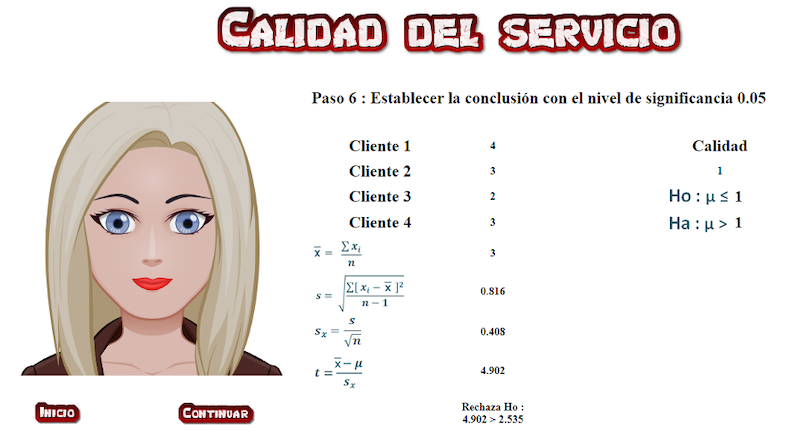
2022 VOL. 9, No. 3
Abstract: SARS-CoV-2 virus has caused universities to update their courses in the distance modality. The general aim of this mixed research was to build and analyse the use of a web application for the educational process about the t-test considering data science. In particular, the professor of the Teaching of Mathematics II course needed to update the school activities because of the new educational demands caused by the COVID-19 pandemic. To facilitate the educational process of math, this teacher decided to build a web application that presents the formulas and calculation of the mean, standard deviation and statistical error to understand the use of the t-test. This technological tool allows the personalisation of learning through the simulation of data. The participants were 42 students from a Mexican university. The results of machine learning indicated that the contents of the web application positively influenced the assimilation of knowledge, satisfaction during the learning process, development of mathematical skills and learning in the distance modality. The decision tree technique allows the construction of four (4) predictive models about the use of the web application for the educational process about the t-test. Finally, educators have the opportunity to improve the teaching-learning conditions during the SARS-CoV-2 virus through the design and construction of web applications.
Keywords: ICT, data science, learning, higher education, web application.
Universities currently seek to improve their educational quality through the incorporation of Information and Communication Technologies (ICTs) in school activities (Guillén-Gámez, Mayorga-Fernández, & Ramos, 2021; Huang & Zhu, 2021; Ocampo-Alvarado & Ullauri-Ugarte, 2021). In fact, teachers are modifying the planning and organisation of courses through technological tools in order to face the new challenges caused by the SARS-CoV-2 virus (Alawajee, 2021; Amka & Dalle, 2022; Demir & Gologlu-Demir, 2021).
Technological advances such as the Learning Management System (LMS), videoconferencing systems and web applications allow the organisation of new virtual educational spaces where students actively participate inside and outside the classroom (Gormaz-Lobos et al., 2022). Therefore, educators use these digital tools to facilitate the communication, consultation of the school content, review of multimedia resources and interaction with the participants of the educational process (Pham et al., 2022; Prevalla et al., 2022).
Technological tools on the internet such as web applications play a fundamental role during the organisation and realisation of new activities because they promote the active role of the students before, during and after classes (Cabero-Almenara et al., 2021; Fan et al., 2021; Grunis et al., 2021). Even distance courses are increasing to meet the educational demands of the students in the 21st century (Arsarkij & Laohajaratsang, 2021; Chambi-Mescco, 2021; Maheshwari, 2021).
Educators can improve the learning process from anywhere and encourage the participation of the students at any time by building educational web applications (Halvoník & Psenak, 2021; Huang & Zhu, 2021; Rodriguez-Lora & Herrera-Caballero, 2021). Likewise, web tools allow the autonomy of the students during the educational process (Demir, Kaleli-Yilmaz, & Sert-Celik, 2021; Fan et al., 2021; Tawafak, Alfarsi, & Jabbar, 2021).
Due to the COVID-19 pandemic, universities have modified the activities of their courses with the support of ICTs to improve the teaching-learning conditions in the distance modality. In particular, the educator of the Teaching of Mathematics II course needed to update school activities because of the new educational demands caused by the SARS-CoV-2 virus. To facilitate the educational process for math, this teacher decided to build a web application that presents the formulas and calculation of the mean, standard deviation and statistical error in order to understand the use of the t-test. This technological tool allows the personalisation of learning through the simulation of data.
The general aim of this mixed research was to build and analyse the use of the web application for the educational process about the t-test using the techniques of data science. The research questions are:
The research hypotheses in this study were the following:
During the COVID-19 pandemic, educators faced the challenge of searching for and using new technological tools to carry out the teaching-learning process in the distance modality (Choiriyah et al., 2022; Rasool et al., 2022; Zulherman et al., 2021). For example, the Learning Management Systems (LMS) facilitated the distribution of tasks, review of the multimedia resources, participation in discussion forums and realisation of online exams at any time (Pham et al., 2022; Zulherman et al., 2021). In fact, Google Classroom, Canvas and Moodle have a fundamental role because these technological tools facilitate the interaction between the teacher and students (Pham et al., 2022; Zulherman et al., 2021).
On the other hand, videoconferencing systems facilitated the communication between the participants of the educational process, presentation of the course topics and resolution of doubts from any location (Ismail et al., 2022; Prevalla et al., 2022). In particular, educators used Zoom to explain the school content at any time during the COVID-19 pandemic (Ismail et al., 2022; Prevalla et al., 2022).
Likewise, technological tools facilitate the personalisation of learning in the distance modality (Gormaz-Lobos et al., 2022). For example, GeoGebra allows updating the activities of Mathematics courses because this web application facilitates the creation of graphs and the identification of coordinates for linear, quadratic, exponential and logarithmic functions (Salas-Rueda & Salas-Rueda, 2019). The benefits of web applications in the educational field are the consultation with information, interaction with school content and active participation of the students from any location (Choiriyah et al., 2022; Zygouris et al., 2017).
Likewise, Rajabalee et al. (2018) explain the level of students' online participation considering use of discussion forums, online quizzes, blogs, YouTube videos, educational websites and the application of eLearning for knowledge acquisition, critical thinking skills, understanding and practical competencies. In conclusion, the incorporation of technological advances such as LMS, videoconferencing systems and web applications improved the teaching-learning conditions, promoted the active role of the students and facilitated the performance of school activities during the COVID-19 pandemic (Choiriyah et al., 2022; Rasool et al., 2022).
The design and construction of technological tools play a fundamental role in facing the challenges caused by the COVID-19 pandemic (Georgieva-Tsaneva & Serbezova, 2021; Liu & Lu, 2021). In fact, the creation and use of technological applications improved the teaching-learning process about the English language (Huang & Zhu, 2021), Computing (Halvoník & Psenak, 2021), Mathematics (Fan et al., 2021) and Medicine (Georgieva-Tsaneva & Serbezova, 2021).
Technological advances open the possibility of creating new virtual spaces for teaching and learning (Arsarkij & Laohajaratsang, 2021; Huang & Zhu, 2021; Liu & Lu, 2021). In Bulgaria, the construction of web games allowed updating school activities in the courses on medicine (Georgieva-Tsaneva & Serbezova, 2021). The use of these technological tools also facilitated the assimilation of knowledge about nursing and developed the skills of the students (Georgieva-Tsaneva & Serbezova, 2021).
In the English course, Huang and Zhu (2021) built a technological tool that allowed the consultation with multimedia resources such as audios, videos and digital presentations from any location. Likewise, Halvoník and Psenak (2021) built a technological application to facilitate the assimilation of knowledge about computing through a virtual assistant.
In the field of mathematics, Fan et al. (2021) built a web system to facilitate the selection of the courses through Bayes' Theorem and the profile of the students. Similarly, Liu and Lu (2021) proposed the construction of web applications to increase the academic performance and motivation of the students, promote the active participation from anywhere and facilitate distance learning.
Finally, educational institutions can update course activities, encourage the active role, facilitate the assimilation of knowledge and develop the students' skills through the construction of technological applications (Fan et al., 2021; Georgieva-Tsaneva & Serbezova, 2021; Halvoník & Psenak, 2021). Even Fan et al. (2021) mention that web tools are the future of education.
Currently, data science allows organising and identifying hidden information to establish the relationships between phenomena (Mi et al., 2022; Zheng & Na, 2021). In fact, this is used by researchers in various fields such as medicine, engineering and education to facilitate decision making (Mi et al., 2022). For example, the techniques of data science such as linear regression, decision trees and neural networks allow identifying the patterns to classify and evaluate the information (Zheng & Na, 2021).
In the educational field, the machine learning technique allowed evaluation of the use of technological tools before, during and after face-to-face sessions through linear regression (Salas-Rueda, 2021). Likewise, the decision tree technique facilitated the identification of the predictive conditions between the independent and dependent variables related to the incorporation of ICTs in the teaching-learning process (Salas-Rueda, 2021).
On the other hand, Parahoo et al. (2016) built a predictive model about the satisfaction of the students in online higher education considering the marketing construct of university reputation, physical facilities, faculty empathy and interactions.
According to Zheng and Na (2021), the machine learning technique (linear regression) allowed for identification of the influence of students' emotions on their academic performance during the English language course. In the same way, Mi et al. (2022) used the neural networks, decision trees and regression to find out what are the factors that affect the academic performance of the students in the distance modality.
Finally, the techniques of data science allow finding patterns, identifying hidden information and evaluating the relationship between phenomena in order to facilitate decision making (Mi et al., 2022; Nuankaew et al., 2019).
The particular aims of this mixed research were: (1) analyse the perception of the students about the use of the web application for the assimilation of knowledge, satisfaction during the learning process, development of mathematical skills and learning in the distance modality through the machine learning technique, (2) build the predictive models about the web application considering the profile of the students through the decision tree technique, and (3) analyse the perception of the students about the use of the web application during the COVID-19 pandemic.
The participants were 42 students (20 men and 22 women) in Mathematics and Computer Science. The average age was 22.85 years. These participants studied in the Faculty of Sciences at the National Autonomous University of Mexico during the 2021 school year. The type of sampling was non-probabilistic.
The educator of the Teaching of Mathematics II course used the PHP programming language to build the web application about the t-test (see Figure 1). This technological tool is available at: http://sistemasusables.com/2022/aplicacion/inicio.html

Figure 1: Web application about the t-test
The ADDIE model facilitated the planning and organisation of the educational web application about the t-test (see Table 1).
Table 1: The ADDIE Model
No. |
Stage |
Aspects |
Description |
1 |
Analysis |
Problem |
Due to the Covid-19 pandemic, universities have modified the activities of the courses with the support of ICTs to improve the teaching-learning conditions in the distance modality |
Educational context |
In particular, the educator of the Teaching of Mathematics II course needed to update the school activities because the new educational demands caused by the SARS-CoV-2 virus |
||
Learning objectives |
Understand the calculation and use of the t-test |
||
Understand the establishment of hypotheses |
|||
Understand and use the formulas about the mean, standard deviation and statistical error |
|||
2 |
Design |
Strategy |
Construction of the educational web application about the t-test |
3 |
Development |
Web Application |
Step 1: Establish the hypotheses |
Step 2: Show the calculation of the mean |
|||
Step 3: Show the calculation of the standard deviation |
|||
Step 4: Show the calculation of the statistical error |
|||
Step 5: Show the calculation of the t-test |
|||
4 |
Implementation |
Distribution |
Internet |
5 |
Evaluation |
Data collection |
Data collection through a questionnaire |
Figure 2 shows the model used to analyse the students' perceptions about the web application.
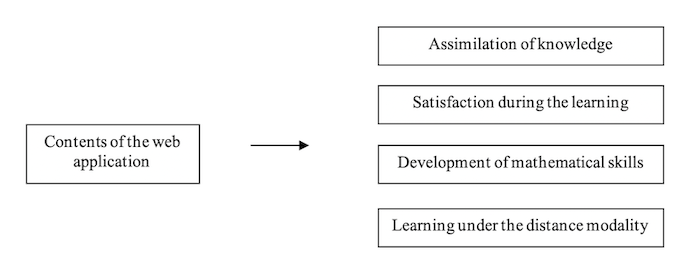
Figure 2: Model used in this research
Various authors (e.g., Arsarkij & Laohajaratsang, 2021; Huang & Zhu, 2021; Liu & Lu, 2021) explain that technological advances such as web applications allow organising new school activities and improving teaching-learning conditions in the distance modality.
The decision tree technique allows identifying the following predictive models about the educational web application:
Table 2 shows the questionnaire used for data collection during the 2021 school year.
Table 2: Questionnaire
No. |
Variable |
Dimension |
Question |
Answer |
n |
% |
1 |
Profile of the students |
Sex |
1. What is your sex? |
|
|
|
Man |
20 |
47.62% |
||||
Woman |
22 |
52.38% |
||||
Age |
2. What is your age? |
|
|
|
||
21 years |
7 |
16.67% |
||||
22 years |
14 |
33.33% |
||||
23 years |
7 |
16.67% |
||||
24 years |
6 |
14.29% |
||||
25 years |
8 |
19.05% |
||||
2 |
Web application about the T-Test |
Contents |
3. The contents of the web application facilitate the creation of new educational virtual spaces |
|
|
|
Very much (1) |
17 |
40.48% |
||||
Much (2) |
17 |
40.48% |
||||
Little (3) |
6 |
14.29% |
||||
Very little (4) |
2 |
4.76% |
||||
Assimilation of knowledge |
4. The web application facilitates the assimilation of knowledge |
|
|
|
||
Very much (1) |
16 |
38.10% |
||||
Much (2) |
18 |
42.86% |
||||
Little (3) |
4 |
9.52% |
||||
Very little (4) |
4 |
9.52% |
||||
Satisfaction during the learning process |
5. The web application increases the satisfaction during the learning process |
|
|
|
||
Very much (1) |
16 |
38.10% |
||||
Much (2) |
18 |
42.86% |
||||
Little (3) |
4 |
9.52% |
||||
Very little (4) |
4 |
9.52% |
||||
Development of mathematical skills |
6. The web application facilitates the development of mathematical skills |
|
|
|
||
Very much (1) |
17 |
40.48% |
||||
Much (2) |
16 |
38.10% |
||||
Little (3) |
7 |
16.67% |
||||
Very little (4) |
2 |
4.76% |
||||
Distance modality |
7. The web application facilitates the learning in the distance modality |
|
|
|
||
Very much (1) |
20 |
47.62% |
||||
Much (2) |
13 |
30.95% |
||||
Little (3) |
6 |
14.29% |
||||
Very little (4) |
3 |
7.14% |
||||
3 |
Students' perception |
Use |
8. What are the benefits about the use of the web application in the educational field? |
Open |
- |
- |
Table 3 shows the validation of the questionnaire by means of Load factor, Cronbach's Alpha and Composite Reliability.
Table 3: Validation of the Questionnaire
Variable |
Dimension |
Load Factor |
Cronbach's Alpha |
Average Variance Extracted |
Composite Reliability |
Web application about the t-test |
Contents |
0.885 |
0.965 |
0.705 |
0.978 |
Assimilation of knowledge |
0.950 |
||||
Satisfaction during the learning process |
0.956 |
||||
Development of mathematical skills |
0.963 |
||||
Distance modality |
0.928 |
The RapidMiner tool allows evaluating the research hypotheses by means of the machine learning technique (linear regression) and building the predictive models by means of the decision tree technique. In the machine learning technique, 60%, 70% and 80% of the sample (training section) allow the calculation of linear regressions and 40%, 30% and 20% of the sample (evaluation section) allow identification of the accuracy of these linear regressions through the squared error (see Figure 3). Also, the independent variable is the contents of the web application about the t-test. On the other hand, the dependent variables are the assimilation of knowledge, satisfaction during the learning process, development of mathematical skills and learning in the distance modality.
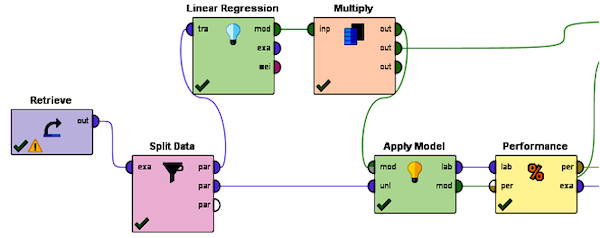
Figure 3: Use of RapidMiner for the machine learning technique
The student's profile (sex and age) allowed the construction of the predictive models in the use of the educational web application about the t-test. The target variables were the assimilation of knowledge, satisfaction during the learning process, and the development of mathematical skills and learning in the distance modality through the decision tree technique (see Figure 4).
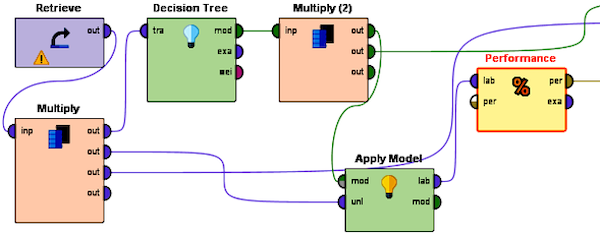
Figure 4: Use of RapidMiner for the decision tree technique
On the other hand, the word cloud application allows identifying the words with the highest frequency.
The contents of the web application facilitate very much (n = 17, 40.48%), much (n = 17, 40.48%), little (n = 6, 14.29%) and very little (n = 2, 4.76%) the creation of new educational virtual spaces (see Table 2). Likewise, the results of machine learning indicate that the contents of the web application positively influence the assimilation of knowledge, satisfaction during the learning process, and development of mathematical skills and learning in the distance modality (see Table 4).
Table 4: Results of Machine Learning
Hypothesis |
Training |
Linear Regression |
Conclusion |
Value of t |
Value of p |
Squared Error |
H1: Web application → assimilation of knowledge |
60% |
y = 0.923x + 0.307 |
Accepted: 0.923 |
6.809 |
0.000 |
0.210 |
70% |
y = 0.943x + 0.243 |
Accepted: 0.943 |
8.077 |
0.000 |
0.255 |
|
80% |
y = 0.949x + 0.147 |
Accepted: 0.949 |
8.363 |
0.000 |
0.362 |
|
H2: Web application → satisfaction during the learning process |
60% |
y = 0.943x + 0.243 |
Accepted: 0.943 |
8.077 |
0.000 |
0.399 |
70% |
y = 0.886x + 0.325 |
Accepted: 0.886 |
8.074 |
0.000 |
0.384 |
|
80% |
y = 0.856x + 0.365 |
Accepted: 0.856 |
7.778 |
0.000 |
0.295 |
|
H3: Web application → development of mathematical skills |
60% |
y = 0.873x + 0.362 |
Accepted: 0.873 |
9.452 |
0.000 |
0.274 |
70% |
y = 0.898x + 0.292 |
Accepted: 0.898 |
11.192 |
0.000 |
0.335 |
|
80% |
y = 0.886x + 0.325 |
Accepted: 0.886 |
11.878 |
0.000 |
0.462 |
|
H4: Web application → learning in the distance modality |
60% |
y = 0.778x + 0.505 |
Accepted: 0.778 |
4.882 |
0.000 |
0.328 |
70% |
y = 0.814x + 0.414 |
Accepted: 0.814 |
5.923 |
0.000 |
0.394 |
|
80% |
y = 0.804x + 0.414 |
Accepted: 0.804 |
6.371 |
0.000 |
0.399 |
Table 5 shows the Pearson's correlations about the use of the educational web application.
Table 5: Pearson Correlations
|
Contents |
Assimilation of Knowledge |
Satisfaction |
Development of Mathematical Skills |
Distance Modality |
Contents |
1 |
- |
- |
- |
- |
Assimilation of knowledge |
0.808 |
1 |
- |
- |
- |
Satisfaction |
0.777 |
0.944 |
1 |
- |
- |
Development of mathematical skills |
0.853 |
0.854 |
0.884 |
1 |
- |
Distance modality |
0.717 |
0.839 |
0.867 |
0.916 |
1 |
The web application facilitates very much (n = 16, 38.10%), much (n = 18, 42.86%), little (n = 4, 9.52%) and very little (n = 4, 9.52%) the assimilation of knowledge (see Table 4). The results of machine learning with 60% (0.923, t-value = 6.809, p-value = 0.000), 70% (0.943, t-value = 8.077, p-value = 0.000) and 80% (0.949, t value = 8.363, p value = 0.000) of training indicate that H1 is accepted (see Table 4.) Consequently, the contents of the web application positively influence the assimilation of knowledge.
Figure 5 shows eight conditions of the PM1 with an accuracy of 88.10%. For example, if the student considers that the contents of the web application very much facilitate the creation of new educational virtual spaces and has an age > 22.5 years then the web application very much facilitates the assimilation of knowledge.
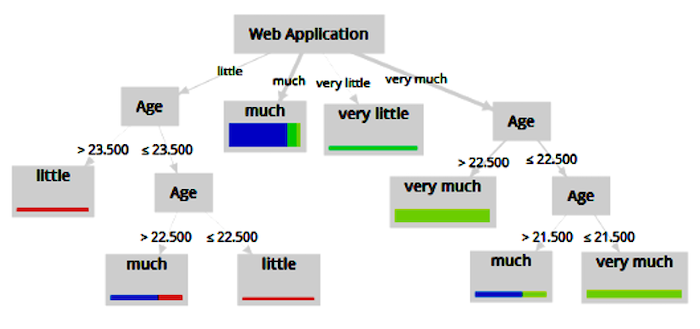
Figure 5: PM1 about the use of the web application
The age of the students determines six conditions of the PM1. For example, if the student considers that the contents of the web application very much facilitate the creation of new educational virtual spaces and has an age ≤ 21.5 years then the web application very much facilitates the assimilation of knowledge.
Satisfaction During the Learning Process
The web application increases very much (n = 16, 38.10%), much (n = 18, 42.86%), little (n = 4, 9.52%) and very little (n = 4, 9.52%) the satisfaction during the learning process (see Table 2). The results of machine learning with 60% (0.943, t-value = 8.077, p-value = 0.000), 70% (0.886, t-value = 8.074, p-value = 0.000) and 80% (0.856, t-value = 7.778, p value = 0.000) of training indicate that H2 is accepted (see Table 4). Consequently, the contents of the web application positively influence satisfaction during the learning process.

Figure 6: PM2 about the use of the web application
Figure 6 shows six conditions of the PM2 with an accuracy of 80.95%. For example, if the student considers that the contents of the web application very much facilitate the creation of new educational virtual spaces then the web application very much increases the satisfaction during the learning process.
The age of the students determines three conditions of the PM2. For example, if the student considers that the contents of the web application facilitate little the creation of new educational virtual spaces and has an age > 23.5 years then the web application increases satisfaction little during the learning process.
The web application facilitates very much (n = 17, 40.48%), much (n = 16, 38.10%), little (n = 7, 16.67%) and very little (n = 2, 4.76%) the development of mathematical skills (see Table 2). The results of machine learning with 60% (0.873, t-value = 9.452, p-value = 0.000), 70% (0.898, t-value = 11.192, p-value = 0.000) and 80% (0.886, t-value = 11.878, p-value = 0.000) of training indicates that H3 is accepted (see Table 4). Therefore, the contents of the web application positively influence the development of mathematical skills.
Figure 7 shows seven conditions of the PM3 with an accuracy of 85.71%. For example, if the student considers that the contents of the web application very much facilitate the creation of new educational virtual spaces then the web application very much increases the satisfaction during the learning process.
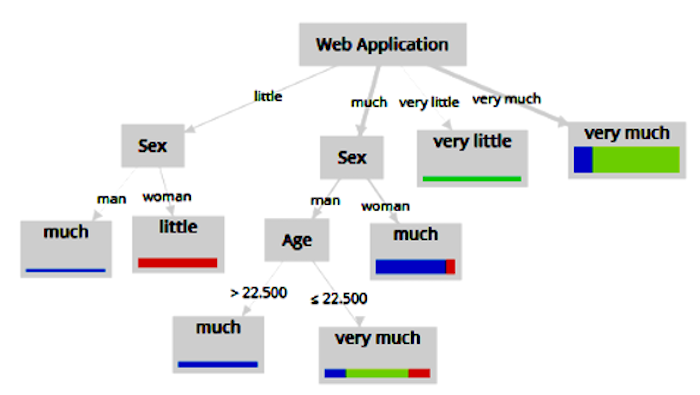
Figure 7: PM3 about the use of the web application
The sex of the students determines five conditions of the PM3. For example, if the student considers that the contents of the web application facilitate little the creation of new educational virtual spaces and is a woman then the web application increases little the satisfaction during the learning process.
Likewise, the age of the students determines two conditions of the PM3. For example, if the student considers that the contents of the web application facilitate much the creation of new educational virtual spaces, has an age > 22.5 years and is a man then the web application increases much the satisfaction during the learning process.
The web application facilitates very much (n = 20, 47.62%), much (n = 13, 30.95%), little (n = 6, 14.29%) and very little (n = 3, 7.14%) the learning in the distance modality (see Table 2). The results of machine learning with 60% (0.778, t-value = 4.882, p-value = 0.000), 70% (0.814, t-value = 5.923, p-value = 0.000) and 80% (0.804, t-value = 6.371, p-value = 0.000) of training indicate that H4 is accepted (see Table 4). Therefore, the contents of the web application positively influence the learning in the distance modality.
Figure 8 shows seven conditions of the PM4 with an accuracy of 80.95%. For example, if a student considers that the contents of the web application very much facilitate the creation of new educational virtual spaces then the web application very much facilitates the learning in the distance modality.
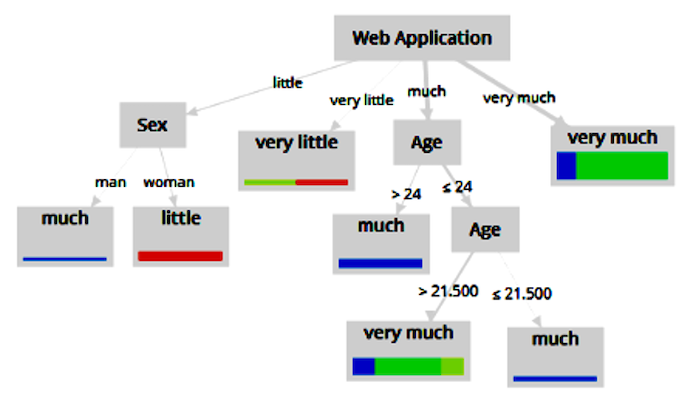
Figure 8: PM4 about the use of the web application
The sex of the students establishes two conditions of the PM4. For example, if the student considers that the contents of the web application facilitate little the creation of new educational virtual spaces and is a woman then the web application facilitates little the learning in the distance modality.
The age of the students establishes three conditions of the PM4. For example, if the student considers that the contents of the web application facilitate much the creation of new educational virtual spaces and has an age > 24 years then the web application facilitates much the learning in the distance modality.
According to the students, one of the benefits about the use of the educational web application is the flexibility of time and space to carry out the school activities during the teaching-learning process.
Likewise, the educational web application about the t-test allowed the personalisation of learning from anywhere.
The educational web application about the t-test facilitated the learning process because the simulator presents the detailed procedure and formulas for the mean, standard deviation and statistical error.
The incorporation of the web application about the t-test in the school activities increased the motivation of the students during the educational process. Also, this technological tool is interactive.
In addition, Figure 9 shows the word cloud about the use of the educational web application. The most common words are: knowledge, better, time, learning, procedure, tools and learn.

Figure 9: Word cloud about the use of the educational web application
Discussion
Today, universities improve the realisation of the teaching-learning process through the incorporation of technology (Arsarkij & Laohajaratsang, 2021; Liu & Lu, 2021). In particular, 40.48% of students consider that the contents of the web application very much facilitate the creation of new educational virtual spaces. In fact, this technological tool facilitates the active role from anywhere through the simulator. Likewise, the contents of the web application facilitate much (n = 17, 40.48%) the creation of new educational virtual spaces. Therefore, most of the students had a favorable opinion about this aspect.
Similar to Dubé et al. (2020), the use of technological tools favors the teaching-learning process about mathematics. In particular, 42.86% of the students think that the web application facilitates much the assimilation of knowledge. In fact, this technological tool allowed the personalisation of learning from anywhere. Likewise, the web application facilitates very much (n = 16, 38.10%) the assimilation of knowledge. Therefore, most of the participants had a favorable opinion about this aspect.
In the field of mathematics, the incorporation of ICTs improves the learning process inside and outside the classroom (Acikgul & Aslaner, 2020; Akugizibwe & Ahn, 2020; Dubé et al., 2020). The results of machine learning on H1 are higher than 0.920, therefore, the contents of the web application positively influence the assimilation of knowledge.
Data science identifies eight conditions of the PM1 with an accuracy greater than 88.00%. In this predictive model, the age of the students determines how the contents of the web application influence the assimilation of knowledge. Also, the decision tree technique establishes two conditions where the web application very much facilitates the assimilation of knowledge.
In the educational field, ICTs allow the organisation of creative activities that meet the educational needs of the students during the COVID-19 pandemic (Alawajee, 2021; Amka & Dalle, 2022; Halvoník & Psenak, 2021). In particular, 42.86% of students consider that the web application increases much the satisfaction during the learning process. According to the students, one of the benefits about this technological tool is the flexibility of time and space to carry out the school activities during the teaching-learning process. Likewise, the web application increases very much (n = 16, 38.10%) the satisfaction during the learning process. Consequently, the majority of the participants had a favorable opinion about this aspect.
Various authors (e.g., Georgieva-Tsaneva & Serbezova, 2021; Huang & Zhu, 2021; Maheshwari, 2021) mention that technological tools play a fundamental role in innovating school activities and creating new educational virtual spaces. The results of machine learning on H2 are higher than 0.850, therefore, the contents of the web application positively influence the satisfaction during the learning process.
Data science identifies six conditions of the PM2 with an accuracy greater than 80.95%. In this predictive model, the age of the students determines how the contents of the web application influence satisfaction. The decision tree technique establishes two conditions where the web application increases much the satisfaction during the learning process.
In the educational context, educators organise and carry out school activities considering ICTs in order to develop the skills and facilitate the assimilation of knowledge at any time (Acikgul & Aslaner, 2020; Akugizibwe & Ahn, 2020; Georgieva-Tsaneva & Serbezova, 2021). In particular, 40.48% of the students consider that the web application very much facilitates the development of mathematical skills. Also, this technological tool facilitated the learning process because the simulator presents the detailed procedure and formulas for the mean, standard deviation and statistical error. Likewise, the web application facilitates much (n = 16, 38.10%) the development of mathematical skills. Consequently, the majority of the participants had a favorable opinion about this aspect.
Similar to Tawafak, Alfarsi and Jabbar (2021), the use of technological tools in the educational field allows students to develop their skills from anywhere. The results of machine learning on the H3 are higher than 0.870, therefore, the contents of the web application positively influence the development of mathematical skills.
Data science identifies seven conditions of the PM3 with an accuracy greater than 85.70%. In this predictive model, the age and sex of the students determine how the contents of the web application influence the development of mathematical skills. The decision tree technique establishes two conditions where the web application very much facilitates the development of mathematical skills.
During the COVID-19 pandemic, the use of ICTs is essential because these technological tools allow the realisation of the school activities from anywhere (Alawajee, 2021; Amka & Dalle, 2022; Halvoník & Psenak, 2021). According to 47.62% of the students, the web application facilitates very much the learning in the distance modality. The incorporation of this technological tool in the school activities increased the motivation of the students during the educational process. Also, the web application facilitates much (n = 13, 30.95%) the learning in the distance modality. Therefore, the majority of the participants had a favorable opinion.
Educators modify their educational practices with the support of ICTs to meet the educational needs of the students (Grunis et al., 2021; Guillén-Gámez, Mayorga-Fernández, & Ramos, 2021; Liu & Lu, 2021). The results of machine learning on the H4 are higher than 0.778, therefore, the contents of the web application positively influence the learning in the distance modality.
Data science identifies seven conditions of the PM4 with an accuracy greater than 80.90%. In this predictive model, the age and sex of the students determine how the contents of the web application influence the learning in the distance modality. The decision tree technique establishes two conditions where the web application facilitates very much the learning in the distance modality.
The implications of this study are the construction and use of web applications to facilitate the teaching-learning process from anywhere and the creation of new school activities through the incorporation of technological tools. Also, this research recommends the design and construction of educational web applications because students can learn the topics of the courses from anywhere and at any time.
Today, technological tools play a fundamental role in facing the challenges caused by the COVID-19 pandemic. The results of machine learning indicate that the contents of the web application positively influence the assimilation of knowledge, satisfaction during the learning process, development of mathematical skills and learning in the distance modality.
The limitations of this research are the size of the sample and participants. Therefore, future research can analyse the web application about the t-test in high schools and universities considering the aspects of the active role of the students before, during and after the virtual classes.
Finally, the COVID-19 pandemic is encouraging educators to use technological tools to improve the teaching-learning conditions and facilitate the organisation of new school activities in the distance modality.
Acknowledgment: This work was supported by UNAM-DGAPA-PAPIME (PE400222): “Diseño, construcción y uso de la aplicación web para el proceso de enseñanza-aprendizaje sobre la prueba t durante la pandemia covid-19 considerando el aula invertida”.
Acikgul, K. & Aslaner, R. (2020). Effects of Geogebra supported micro teaching applications and technological pedagogical content knowledge (TPACK) game practices on the TPACK levels of prospective teachers. Education and Information Technologies, 25, 2023-2047. https://doi.org/10.1007/s10639-019-10044-y
Akugizibwe, E., & Ahn, J. Y. (2020). Perspectives for effective integration of e-learning tools in university mathematics instruction for developing countries. Education and Information Technologies, 25, 889-903. https://doi.org/10.1007/s10639-019-09995-z
Alawajee, O. (2021). Influence of COVID-19 on students’ sign language learning in a teacher-preparation program in Saudi Arabia: Moving to e-learning. Contemporary Educational Technology, 13(3), ep308. https://doi.org/10.30935/cedtech/10886
Amka, A., & Dalle, J. (2022). The satisfaction of the special need’ students with e-learning experience during COVID-19 pandemic: A case of educational institutions in Indonesia. Contemporary Educational Technology, 14(1), ep334. https://doi.org/10.30935/cedtech/11371
Arsarkij, J., & Laohajaratsang, T. (2021). A design of personal learning network on social networking tools with gamification for professional experience. International Journal of Emerging Technologies in Learning, 16(18), 53-68. https://doi.org/10.3991/ijet.v16i18.25159
Cabero-Almenara, J., Vázquez-Cano, E., Villota-Oyarvide, W., & López-Meneses, E. (2021). Innovation in the university classroom through augmented reality. Analysis from the perspective of the Spanish and Latin American students. Revista Electrónica Educare, 25(3), 1-17. https://doi.org/10.15359/ree.25-3.1
Chambi-Mescco, E. (2021). Attitudes of students from a public university about the application of the flipped learning. Revista Electrónica Educare, 25(3), 1-18. https://doi.org/10.15359/ree.25-3.5
Choiriyah, Mayuni, I., & Dhieni, N. (2022). The effectiveness of multimedia learning for distance education toward early childhood critical thinking during the covid-19 pandemic. European Journal of Educational Research, 11(3), 1553-1568. https://doi.org/10.12973/eu-jer.11.3.1555
Demir, B., Kaleli-Yilmaz, G., & Sert-Celik, H. (2021). Teachers’ attitudes and opinions on mathematics lessons conducted with distance education due to covid-19 pandemic. Turkish Online Journal of Distance Education, 22(4), 147-163. https://doi.org/10.17718/tojde.1002812
Demir, E. & Gologlu-Demir, C. (2021). Investigation of parents’ opinions about distance education during the covid-19 pandemic. Turkish Online Journal of Distance Education, 22(2), 42-57. https://doi.org/10.17718/tojde.906485
Dubé, A. K., Kacmaz, G., Wen, R., Alam, S. S., & Xu, C. (2020). Identifying quality educational apps: Lessons from ‘top’ mathematics apps in the Apple App store. Education and Information Technologies, 25, 5389-5404. https://doi.org/10.1007/s10639-020-10234-z
Fan, Y., Zhang, J., Zu, D., & Zhang, H. (2021). An automatic optimal course recommendation method for online math education platforms based on Bayesian Model. International Journal of Emerging Technologies in Learning, 16(13), 95-107. https://doi.org/10.3991/ijet.v16i13.24039
Georgieva-Tsaneva, G. N., & Serbezova, I. (2021). Using serious games and video materials in clinical training in nursing and midwifery education. International Journal of Emerging Technologies in Learning, 16(16), 231-241. https://doi.org/10.3991/ijet.v16i16.23455
Gormaz-Lobos, D., Galarce-Miranda, C., Kersten, S., & Hortsch, H. (2022). Perceptions of teaching staff about the online learning in engineering during SARS CoV pandemic. International Journal of Engineering Pedagogy, 12(3), 25-37. https://doi.org/10.3991/ijep.v12i3.27043
Grunis, M. L., Golovanova, I. I., Kirilova, G. I., Levina, E. Y., & Sizova, Z. M. (2021). Transformation of pedagogical communicative competence during creation digital online courses. Contemporary Educational Technology, 13(1), ep289. https://doi.org/10.30935/cedtech/9313
Guillén-Gámez, F. D., Mayorga-Fernández, M. J., & Ramos, M. (2021). Examining the use self-perceived by university teachers about ICT resources: Measurement and comparative analysis in a one-way ANOVA design. Contemporary Educational Technology, 13(1), ep282. https://doi.org/10.30935/cedtech/8707
Halvoník, D., & Psenak, P. (2021). Design of an educational virtual assistant software. International Journal of Emerging Technologies in Learning, 16(11), 308-321. https://doi.org/10.3991/ijet.v16i11.19847
Huang, Y., & Zhu, J. (2021). A personalized English learning material recommendation system based on knowledge graph. International Journal of Emerging Technologies in Learning, 16(11), 160-173. https://doi.org/10.3991/ijet.v16i11.23317
Ismail, H., Khelifi, A., & Harous, S. (2022). A cognitive style based framework for usability evaluation of online lecturing platforms — A case study on Zoom and Teams. International Journal of Engineering Pedagogy, 12(1), 104-122. https://doi.org/10.3991/ijep.v12i1.25295
Liu, F. J., & Lu, C. M. (2021). Design and implementation of a collaborative educational gamification authoring system. International Journal of Emerging Technologies in Learning, 16(17), 277-289. https://doi.org/10.3991/ijet.v16i17.24087
Maheshwari, G. (2021). Factors affecting students’ intentions to undertake online learning: an empirical study in Vietnam. Education and Information Technologies, 26, 6629-6649. https://doi.org/10.1007/s10639-021-10465-8
Mi, H., Gao, Z., Zhang, Q., & Zheng, Y. (2022). Research on constructing online learning performance prediction model combining feature selection and neural network. International Journal of Emerging Technologies in Learning, 17(7), 94-111. https://doi.org/10.3991/ijet.v17i07.25587
Nuankaew, W. S., Nuankaew, P., Teeraputon, D., Phanniphong, K., & Bussaman, S. (2019). Perception and attitude toward self-regulated learning of Thailand’s students in educational data mining perspective. International Journal of Emerging Technologies in Learning, 14(9), 34-49. https://doi.org/10.3991/ijet.v14i09.10048
Ocampo-Alvarado, J., & Ullauri-Ugarte, M. (2021). Factors for the acceptance and use of a learning management system in students of an Ecuadorian university. Revista Electrónica Educare, 25(3), 1-21. https://doi.org/10.15359/ree.25-3.10
Parahoo, S. K., Santally, M. I., Rajabalee, Y., & Harvey, H. L. (2016). Designing a predictive model of student satisfaction in online learning. Journal of Marketing for Higher Education, 26(1), 1-19. https://doi.org/10.1080/08841241.2015.1083511
Pham, P., Lien, D. T. H., Kien, H. C., Chi, N. H., Tinh, P. T., Do, T., Nguyen, L. C., & Nguyen, T. (2022). Learning management system in developing countries: A bibliometric analysis between 2005 and 2020. European Journal of Educational Research, 11(3), 1363-1377. https://doi.org/10.12973/eu-jer.11.3.1363
Prevalla, B., Shaidullina, A. R., Ishmuradova, I. I., Larionova, A. A., Kosarenko, N. N., & Andryushchenko, I. S. (2022). Determining university students’ availability on Zoom. International Journal of Engineering Pedagogy, 12(2), 35-47. https://doi.org/10.3991/ijep.v12i2.29283
Rajabalee, Y. B., Rennie, F., & Santally, M. I. (2018). The relationship between quality of student contribution in learning activities and their overall performances in an online course. European Journal of Open, Distance and Elearning, 21(1), 16-31.
Rasool, U., Aslam, M. Z., Qian, J., & Barzani, S. H. H. (2022). The effects of online supervisory feedback on student-supervisor communications during the covid-19. European Journal of Educational Research, 11(3), 1569-1579. https://doi.org/10.12973/eu-jer.11.3.1569
Rodriguez-Lora, V., & Herrera-Caballero, J. (2021). Organizational Learning in higher education institutions. Case study of a research group. Revista Electrónica Educare, 25(3), 1-13. https://doi.org/10.15359/ree.25-3.3
Salas-Rueda, R. A., & Salas-Rueda, R. D. (2019). Use of data science and machine learning to analyze GeoGebra application in the educational process. Digital Education Review, 36,117-151. https://doi.org/10.1344/der.2019.36.117-151
Salas-Rueda, R. A. (2021). Students’ perceptions of the use of the flipped classroom during the educational process of linear functions. Cultura y Educación, 33(3), 431-454. https://doi.org/10.1080/11356405.2021.1949109
Tawafak, R. M., Alfarsi, G., & Jabbar, J. (2021). Innovative smart phone learning system for graphical systems within COVID-19 pandemic. Contemporary Educational Technology, 13(3), ep306. https://doi.org/10.30935/cedtech/10879
Zheng, Z., & Na, K. S. (2021). A data-driven emotion model for english learners based on machine learning. International Journal of Emerging Technologies in Learning, 16(8), 34-46. https://doi.org/10.3991/ijet.v16i08.22127
Zulherman, A., Zain, F. M., Napitupulu, D., Sailin, S. N., & Roza, L. (2021). Analyzing Indonesian students’ Google classroom acceptance during covid-19 outbreak: Applying an extended unified theory of acceptance and use of technology model. European Journal of Educational Research, 10(4), 1697-1710. https://doi.org/10.12973/eu-jer.10.4.1697
Zygouris, N. C., Vlachos, F., Dadaliaris, A. N., Oikonomou, P., Stamoulis, G. I., Vavougios, D., Nerantzaki, E., & Striftou, A. (2017). A neuropsychological approach of developmental dyscalculia and a screening test via a web application. International Journal of Engineering Pedagogy, 7(4), 51-65. https://doi.org/10.3991/ijep.v7i4.7434
Authors:
Ricardo-Adán Salas-Rueda is a full time researcher in the Instituto de Ciencias Aplicadas y Tecnología, Universidad Nacional Autónoma de México. Email: ricardo.salas@icat.unam.mx
Selene-Marisol Martínez-Ramírez is an academic technician in the Instituto de Ciencias Aplicadas y Tecnología, Universidad Nacional Autónoma de México. Email: selene.martinez@icat.unam.mx
Jesús Ramírez-Ortega is an academic technician in the Instituto de Ciencias Aplicadas y Tecnología, Universidad Nacional Autónoma de México. Email: jesus.ramirez@icat.unam.mx
Clara Alvarado-Zamorano is an academic technician in the Instituto de Ciencias Aplicadas y Tecnología, Universidad Nacional Autónoma de México. Email: clara.alvarado@icat.unam.mx
Cite this paper as: Salas-Rueda, R-A., Martínez-Ramírez, S-M., Ramírez-Ortega, J., & Alvarado-Zamorano, C. (2022). Students' perception about the use of an educational web application during the COVID-19 pandemic. Journal of Learning for Development, 9(3), 509-527.